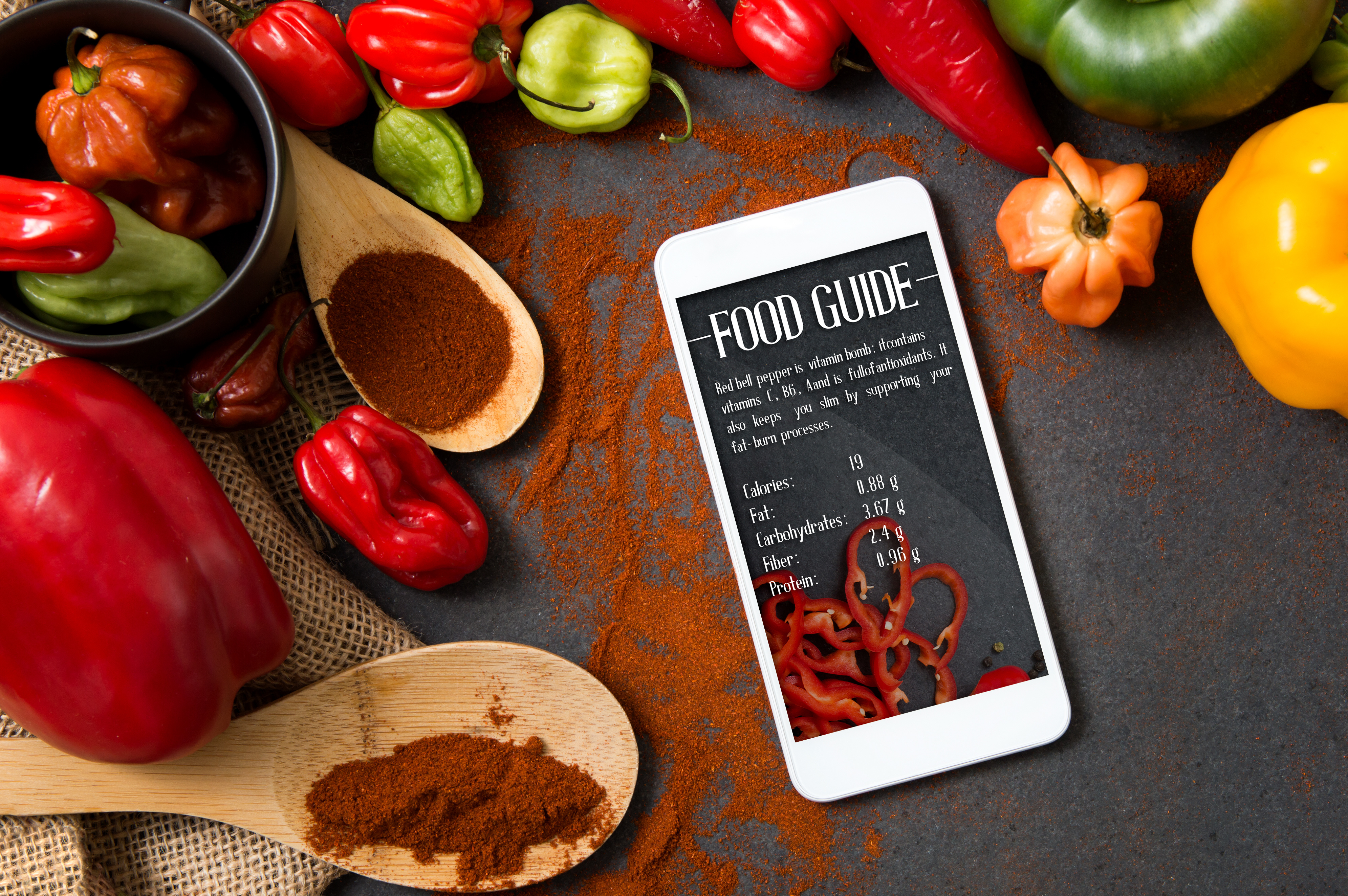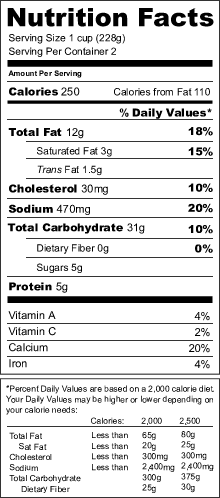43 how to interpret nutrition labels
Food labels - NHS Nutrition labels are often displayed as a panel or grid on the back or side of packaging. This type of label includes information on energy (kJ/kcal), fat, ... Understanding Food Labels | The Nutrition Source The label lists the calorie amount for one serving of food. The serving size, also important but often unnoticed, is easily doubled or tripled when not paying ...
How to Read and Interpret Nutrition Labels - Cecelia Health As part of keeping track of an overall balanced diet, the number one starting point is to read the nutrition label. Start with the portion size at the top of the label to determine what a portion size is. This helps keep track of optimal dietary intake. There may be more than one serving in a package.

How to interpret nutrition labels
How To Read Food and Beverage Labels | National Institute on Aging At the top of the Nutrition Facts label, you will find the total number of servings in the container and the food or beverage's serving size. The serving size on the label is based on the amount of food that people may typically eat at one time and is not a recommendation of how much to eat. Read more about serving and portion sizes. The Basics of the Nutrition Facts Label Mar 4, 2022 — Step 1: Start with the Serving Size · Step 2: Compare the Total Calories to Your Individual Needs · Step 3: Let the Percent Daily Values Be a ... How to read food labels: MedlinePlus Medical Encyclopedia Calorie information tells you the number of calories in 1 serving. Adjust the number of calories if you eat smaller or larger portions. This number helps determine how foods affect your weight. The total carbs (carbohydrates) are listed in bold letters to stand out and are measured in grams (g).
How to interpret nutrition labels. How to read a nutrition label | MD Anderson Cancer Center Step 1 - Check the serving size and the Percent Daily Value. The serving size is at the top of the label. It may be listed by volume (one cup), weight (6 ounces) or units (one cookie). Under that, the label will tell you how many servings are in the package. Don't assume that the whole package is a single serving. Understanding Food Nutrition Labels | American Heart Association 1 - Start with the serving information at the top. This will tell you the size of a single serving and the total number of servings per container (package). 2 - Next, check total calories per serving and container. Pay attention to the calories per serving and how many calories you're really consuming if you eat the whole package. PDF How to Read the Food Label - Risk Services Sample label much you're actually eating. If you eat 2 servings, this doubles the calories and nutrients, including the Percent Daily Values (DV). Make your calories count. Look at the calories on the label and compare them with the nutrients. Then decide if the food is a good choice for you. Know your fats. Look for foods Learn How the Nutrition Facts Label Can Help You Improve Your Health That means if you consume 2,000 calories in a day, added sugars should account for no more than 200 calories. Read the Nutrition Facts labels on your packaged food and drinks to keep track of sugars, fats, protein, and other nutrients. Most sodium we consume is from salt, and salt is commonly in processed foods.
How to understand food labels - Eat For Health The Nutrition Information Panel on a food label offers the simplest and easiest way to choose foods with less saturated fat, salt (sodium), added sugars and kilojoules, and more fibre. It can also be used to decide how large one serve of a food group choice or discretionary food would be and whether it's worth the kilojoules. How Do You Read The Nutrition Facts Label? - Dr Reads How do you read the Nutrition Facts label? How to Understand and Use the Nutrition Facts Label. Serving Information. (#1 on sample label) When looking at the Nutrition Facts label, first take a look at the number of servings in the package (servings per container) and the serving size. Calories. (#2 on sample label) How do you read a food nutrition label? Step 1: Determine the number of servings and the number of calories per serving. The serving size determines all of the information on a food label. Step 2: Determine the amount of fat in the dish. Step 3: Determine the amount of cholesterol in your system. Step 4: Make sure the sodium level is correct (salt). How to Read a Nutrition Label? (Things to Consider Explained) This section talks about the number of serving in that container and the serving size. It is compulsory by law and would make the understanding of the rest of the label easy. Calories: The next important section on the label is the calorie count. Be sure that the calorie count is about the serving size or per serving.
An Easy-Peasy Guide For How To Read A Nutrition Label But that doesn't mean we should avoid learning how to properly read the ones we've still got. Nutrition labels can be tough to decipher, thanks to scientific jargon and ingredients that are difficult to identify. But this graphic from ReuiseThisBag breaks them down in easy-peasy fashion. Consider it Nutrition Labels 101: See a larger version here. Learning To Read Labels :: Diabetes Education Online On a nutrition food label, subtract the fiber from the total carbohydrate amount. When you read food labels, the grams of sugar are already included in the total carbohydrate amount, so you do not need to count this sugar amount separately. The grams of sugar listed include both natural sugars, from fruit or milk, and added sugars. How To Read a Nutrition Label Correctly | Healclub Each nutrient amount on the label is based on this serving information. If a serving size is one cup and you eat two cups, you consume two servings, doubling the calories, nutrients and percent of daily values. Percent Daily Value (%DV) The percent daily value shows you the percentage of the daily value for each nutrient in a single serving. How to read the nutritional labels on food? How do you read food labels in four steps? Food Labels to Read. Step 1: Determine the number of servings and the number of calories per serving. The serving size determines all of the information on a food label. Step 2: Determine the amount of fat in the dish. Step 3: Determine the amount of cholesterol in your system.
How To Read Nutrition Food Labels - Superfood Pharmacist The nutrition facts label includes a column displaying the Percent Daily Value for the listed nutrients. The Percent Daily Value indicates how much one serving of the food item contributes toward the recommended daily value for that nutrient (fat, carbohydrates, vitamin D, etc.) based on a 2000-calorie diet. For example: If an individual's needs are 2000 calories per day, one serving of the ...
How to Properly Read a Nutrition Label - Caroline Breen Serving Size (2:30): the portion of food for that specific nutrition label. Calories (3:15): the amount of energy contained in the serving size. % Daily Value (3:55): based on a 2,000 calorie diet, this may or may not fit into your specific nutrition needs. Fats (4:20): listed as total and broken down into the different types.
How to Read Nutrition Labels: Fat Content, Carbs & What To Look For Nutrition labels are required to include total fat, saturated fat, and trans fat. The total amount of fat in the diet is a percentage of your calorie needs. The recommendation for the typical American diet is around 30%. For someone taking in 2,000 calories, this would mean around 70 grams of total fat per day.
How To Read Nutrition Labels All the nutrition info — including calories — refer to the amount in one serving. 2. Check the calories in one serving 40 calories is low, 100 calories is moderate, 400 calories or more is high. Remember: If you eat multiple servings, you'll need to multiply the calories by the number of serving that you eat. 3. Check the % Daily Value
How to read food labels | healthdirect Understanding nutrition claims — Some labels tell you what percentage of the recommended daily intake is provided by 1 serve of the product.


Post a Comment for "43 how to interpret nutrition labels"